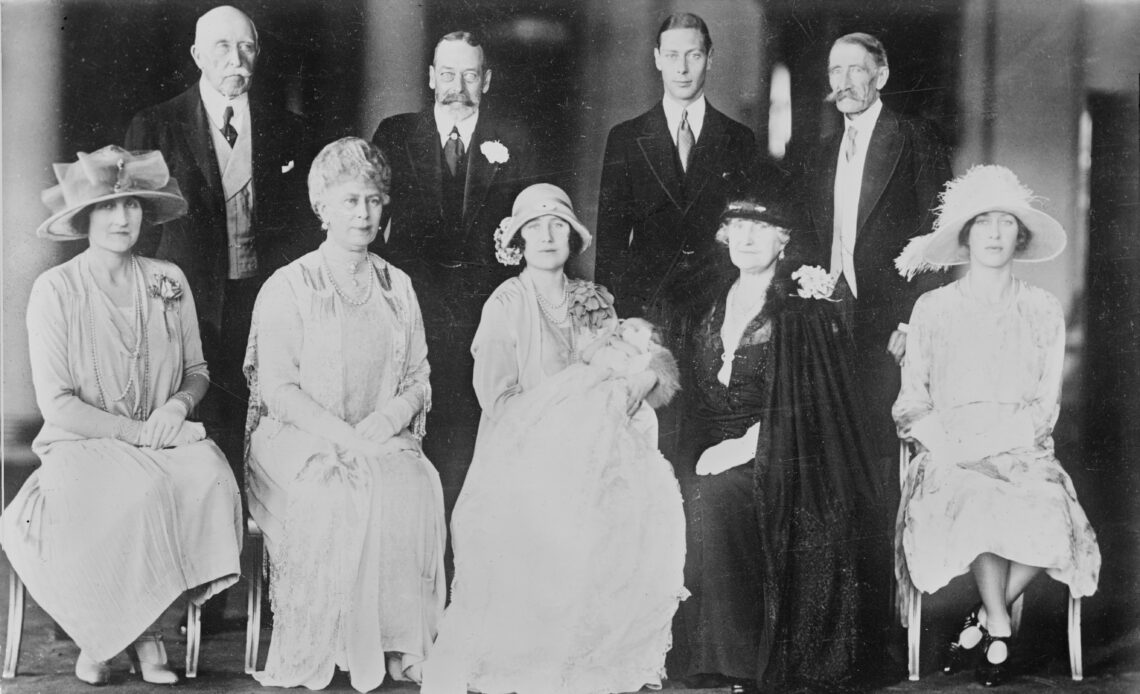
A royal baby born on a December day would go on to introduce a new chapter to an historic royal tradition. For over a century, the Royal Family always dressed babies in a lace christening gown for their baptisms. However, by the start of the 21st century it had become so fragile that it was feared continued use might damage it beyond repair. And so an intricate copy of the famous Victorian outfit was made, identical to the original, but more resilient. The first baby to wear it was James, now Earl of Wessex, son of the Duke and Duchess of Edinburgh.
His older sister, Louise, had worn the original gown at her christening, following a custom started by her great, great, great, great grandmother, Queen Victoria, who commissioned the outfit for a very important reason.
When Queen Victoria and Prince Albert welcomed their first child in November 1840 they set about designing a perfect family christening for her which would take place on their first wedding anniversary. Baby Victoria Adelaide Mary Louisa, Princess Royal was baptized on February 10th 1841 in the Throne Room at Buckingham Palace by the Archbishop of Canterbury, William Howley, at the Lily Font, specially commissioned for the occasion. And the baby was wrapped in another special commission, the Honiton Lace Christening gown.
Queen Victoria described it in her diary as ‘’a white Honiton point robe and mantle over white satin’’ and she had added some very personal touches. For the gown was designed along the lines of her own wedding dress from a year earlier and, like that creation, it was made to support industries in need of help.
Both Spitalfields in London, where the silk for the gown was spun, and Honiton in Devon where the lace overlay was handmade, needed the publicity for their cloth production. In the preceding years Honiton, in particular, had seen a real downturn in demand for its lace as machine manufactured material replaced the intricate designs of scrollwork that had been created in the area for several centuries.
Queen Victoria hoped that by using the fabrics in such high profile outfits, she would give the local industries, many of which were major sources of income for women, a much needed boost. She also wore lace from her own wedding gown on the dresses she wore to her children’s baptisms to give the area more exposure.
The resulting christening gown was a very pretty, traditional outfit. It has a gentle scoop neck and small cap sleeves, covered in lace, and a long skirt covered in more flounces of the same fabric. It was designed and made by Janet Sutherland, who was the daughter of a coal miner from Falkirk. Victoria was so impressed with her work that she gave her the title of Embroiderer to the Queen.
The gown was seen again the following year when Victoria and Albert christened their first son, the future Edward VII. The baby, born on November 9th 1841, was baptised Albert Edward in the outfit at St. George’s Chapel, Windsor on January 25th 1842. He was the first of six monarchs to wear the gown – George V, Edward VIII, George VI, Queen Elizabeth II and Charles III were all dressed in the outfit for their own baptisms, too. In total 62 royals wore the robe.
However, the fabric began to show signs of fragility and in 2004, the Queen decided the heirloom wasn’t up to further, regular use. The last baby to be christened in the original gown was Lady Louise Windsor in 2004.
By the time her little brother, James, arrived, the replica gown was ready for baptisms. The exact copy was created by the Queen’s dressmaker, Angela Kelly, and her team and was first seen at the christening of Viscount Severn on April 19th 2008 at Windsor Castle.
Since then it has been used for many royal babies including the great grandchildren of Queen Elizabeth II. Safely stored in the royal wardrobe, it is now a tradition all of its own and it began with James, Earl of Wessex.

